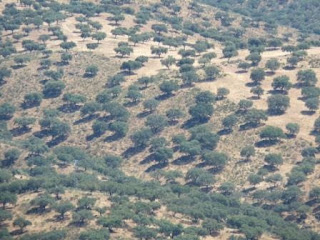Extremadura on foot

Marsh Harrier (John Hawkins) I had been walking for two hours along a track across the mixed farming landscape that makes the plains of Extremadura so rich for birdlife. The path took me down beside a small pool. The view across the water was staggering, the surface was bristling with duck, almost all of them Teal, giving their sharp cracking calls. I tensed, not wanting to disturb them. Those at the edge of the water nearest to me, took off momentarily, splashing down again in the water after barely a few metres in the air. I relaxed, the duck clearly had no interest to move on. Those on the bank dozed or preened, whilst those on the water milled around, and the scene was reminiscent of slow-motion dodgems at a fairground, seemingly random movements, which brought back memories of smoke particles, Brownian motion and school physics. They were tightly packed on the water and I made an attempt to count them: my estimate reached 1600 Teal alone, along with other duck such as Shoveler...


.jpg)












